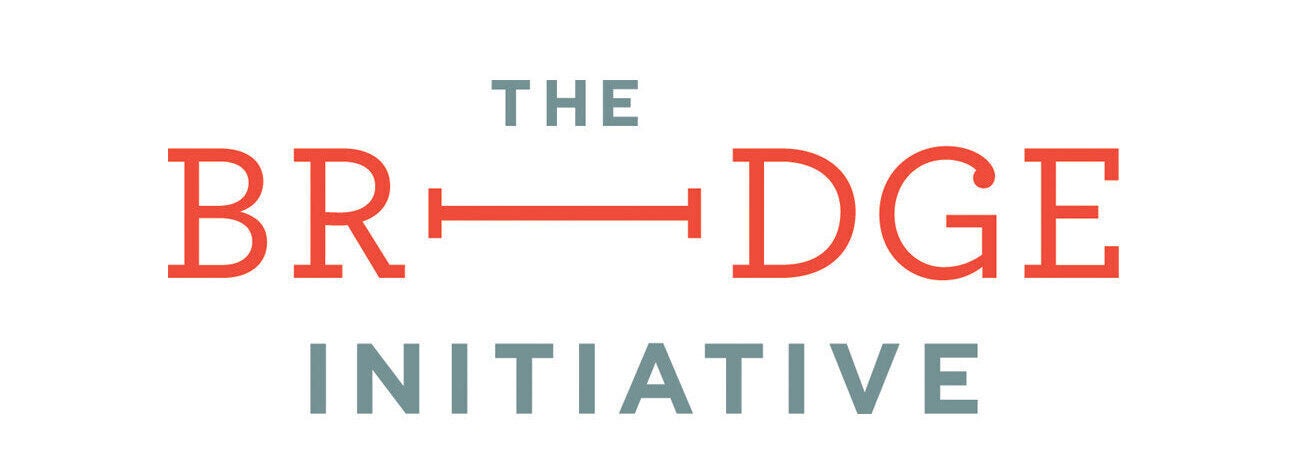
Is the Hijab “Passive Terrorism?”
Recently, a report exposed a U.S. government white paper that links the hijab to the spread of violent extremism. As first revealed by The Intercept, the U.S. Air Force Research Laboratory published pseudo-analysis from Tawfik Hamid asserting that “… the proliferation of militant Salafism and the hijab contribute to the idea of passive terrorism, which occurs when moderate segments of the population decline to speak against or actively resist terrorism.”
While the author later attempted to qualify his assertions explaining that he was targeting “the phenomenon of hijab” — a First Amendment right also protected in international human rights law – in Muslim countries where it’s common as opposed to the women who embrace it, his statements are unsupported by empirical research evidence that suggests otherwise.
According to a recent Zogby report, “Muslim Millennial Attitudes on Religion and Religious Leadership,” gauging public opinion in eight Muslim majority contexts – presumably including places that have witnessed the “phenomenon of hijab” –at least three-quarters of all those polled believe groups like ISIS and al-Qaeda are a complete perversion of Islam.
This includes more than 9 in 10 respondents in the UAE and Morocco as well as 83% of those in Egypt, 65% in Bahrain, 61% in Jordan, 58% in Palestine, and 57% in Saudi Arabia.
The most frequently cited reason for joining such violent extremist groups is “corrupt, repressive and unrepresentative governments.”
Surprisingly, the hijab went unmentioned.
Another report, the Doha Institute’s 2015 Arab Opinion Index released last December, revealed similar findings. Approximately 89% of the Arab public — spanning from Saudi Arabia to Mauritania to Jordan to Kuwait to Palestine to Egypt — views ISIS negatively. And the support of the few who don’t is rooted in politics as it relates to the region and its conflicts.
Interestingly, the most popular strategy cited by respondents to combat ISIS: support for democratic transition in the Arab World (28%). Resolving the Palestinian cause was the second most common response (18%).
Here, too, the “phenomenon of hijab” went unmentioned.
Additionally, Pew Research Center findings released late last year show overwhelmingly negative views of ISIS across Muslim majority countries including Indonesia, Senegal, Turkey, Nigeria, Burkina Faso and Malaysia.
Hamid’s opinions — correlating benign religious observance to violent extremism — are unfortunate. The inclusion in materials presumably used to educate and train our military, law enforcement agents and other U.S. government officials is deeply troubling.
In fact, The Intercept reveals that the FBI relied on the paper — that included Hamid’s contribution characterizing the hijab as “passive terrorism” — when it developed its 2014 counter-terrorism strategy.
Still, the FBI should really know better.
From 2003 through 2011, FBI training materials were fraught with factual inaccuracies, denigrating remarks about Muslims, Arabs and South Asians and positive correlations between Islam and violence.
Consider the following false assertions:
• “Historically, the mainstream Muslims have always been the silent weak majority within the Islamic faith;”
• “Wahabis control the Koran and it’s [sic] issuance and distribution worldwide. No Koran is distributed without the approval of the Saudi Arabian government’s religious institutions;” and
• Islam incites adherents to commit “genocide.”
Training materials also stereotyped Arabs and Muslims as inherently irrational and unstable:
• “… the Arab mind is a Cluster Thinker, while the Western mind tends to be a linear thinker;”
• “… although Islam was not able to change the cluster Arab mind thinking into a linear one . . . it alleviated some of the weakness that inflicted the Arab mind in general;”
• “Never attempt to shake hands with an Asian. Never stare at an Asian. Never try to speak to an Arab female prior to approaching the Arab male first.”
Such assertions are harmful in so far as they conflate the second largest monotheistic religion in the world, the majority of whose adherents practice the faith peacefully, with a virulent, militant formulation of it — which in reality is subscribed to by a small minority of Muslims. By doing so, it thereby distorts the reality on the ground and fails to educate appropriately.
In essence, pseudo-analysis such as that propagated by Hamid above can only result in misguided religious and racial profiling tactics, misdirected counter-terrorism investigations and false narratives about the West’s war against Islam and Muslims.
As NYU professor Arun Kundnani correctly observed in the original report by The Intercept, they “should not have been included in any kind of government training material or published research,” because the purpose of his chapter “is not a genuine investigation of the roots of violence, but rather an attempt to supply national security agencies with bogus surveillance rubrics.”

 Search
Search